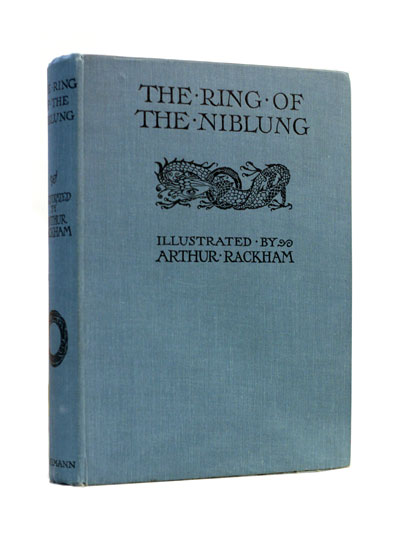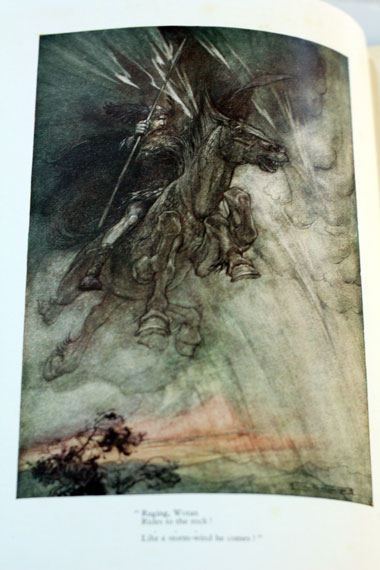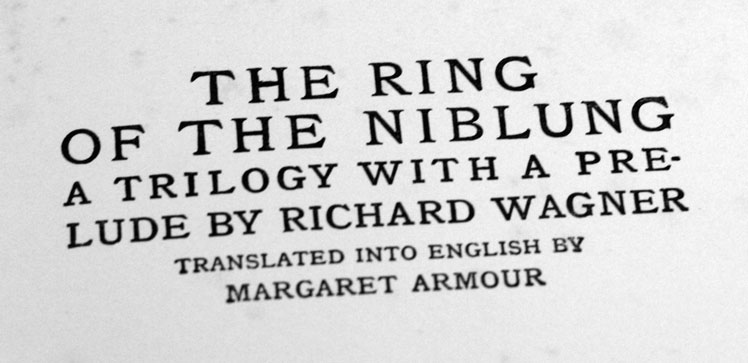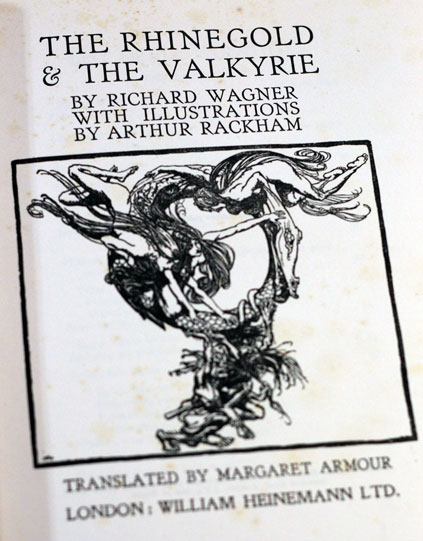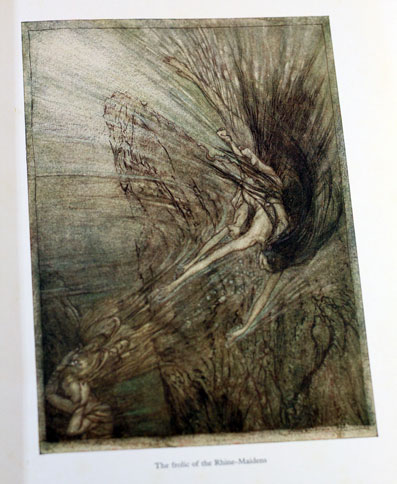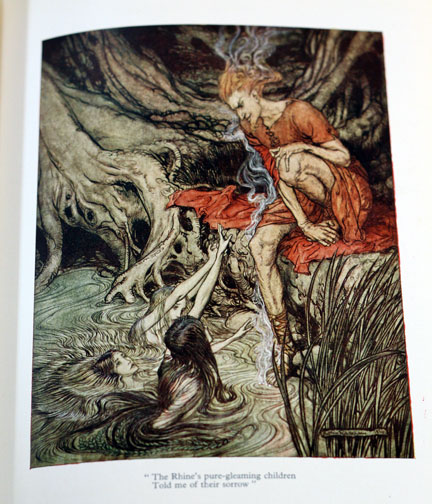About the book (from wikipedia):
The plot revolves around a magic ring that grants the power to rule the world, forged by the Nibelung dwarf Alberich from gold he stole from the Rhine maidens in the river Rhine. With the assistance of the god Loge, Wotan – the chief of the gods – steals the ring from Alberich, but is forced to hand it over to the giants, Fafner and Fasolt in payment for building the home of the gods, Valhalla, or they will take Freia, who provides the gods with the golden apples that keep them young. Wotan’s schemes to regain the ring, spanning generations, drive much of the action in the story. His grandson, the mortal Siegfried, wins the ring by slaying Fafner (who slew Fasolt for the ring) – as Wotan intended – but is eventually betrayed and slain as a result of the intrigues of Alberich’s son Hagen, who wants the ring. Finally, the Valkyrie Brünnhilde – Siegfried’s lover and Wotan’s daughter who lost her immortality for defying her father in an attempt to save Siegfried’s father Sigmund – returns the ring to the Rhine maidens as she commits suicide on Siegfried’s funeral pyre. Hagen is drowned as he attempts to recover the ring. In the process, the gods and Valhalla are destroyed.
Der Ring des Nibelungen (The Ring of the Nibelung), WWV 86, is a cycle of four epic operas by the German composer Richard Wagner. The works are based loosely on characters from the Norse sagas and the Nibelungenlied. The composer termed the cycle a “Bühnenfestspiel” (stage festival play), structured in three days preceded by a Vorabend (“ante-evening”). It is often referred to as the Ring Cycle, Wagner’s Ring, or simply The Ring.
Wagner wrote the libretto and music over the course of about twenty-six years, from 1848 to 1874. The four operas that constitute the Ring cycle are, in sequence:
Das Rheingold (The Rhine Gold)
Die Walküre (The Valkyrie)
Siegfried
Götterdämmerung (Twilight of the Gods)
Although individual operas of the sequence are sometimes performed separately, Wagner intended them to be performed in series. The first performance as a cycle opened the first Bayreuth Festival in 1876, beginning with Das Rheingold on 13 August and ending with Götterdämmerung on 17 August.

